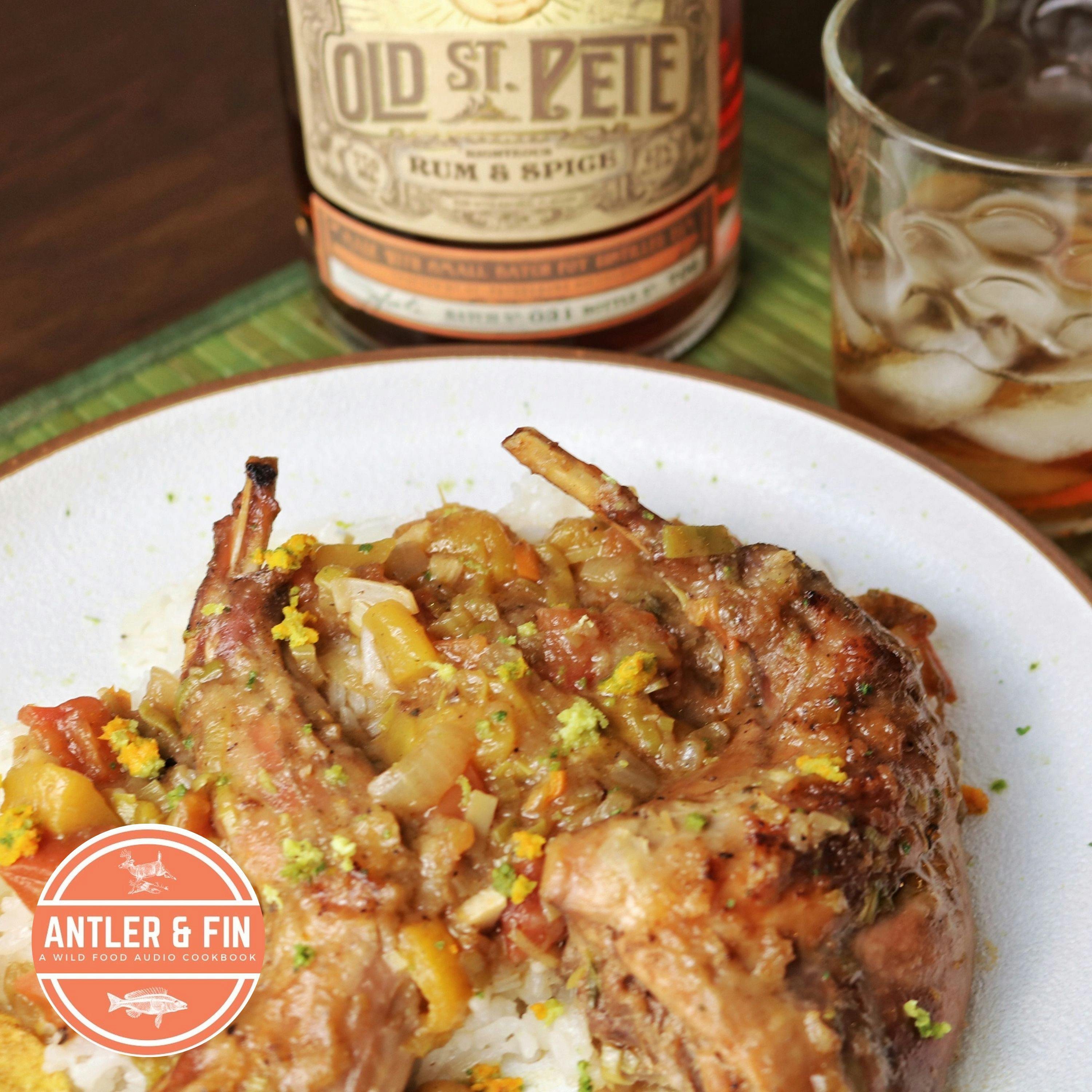Florida Rum Braised Rabbit and the History of Rum

b"I recently watched a film that was shot in South Florida which depicted a family hunting rabbits as the sugar cane was being harvested. The rabbits would run out of the cane as the thresher mowed down the stalks. As they ran out, the kids would chase them and strike them down with large sticks.\\xa0\\nThis may seem a little rough, but there is a long tradition of harvesting rabbits with sticks. Many Southeastern American Indian tribes would use bulky throwing sticks to kill or knock rabbits out while hunting.\\nThis film also got me thinking about pairing Florida ingredients with the Florida rabbits that I harvested. Those thoughts culminated in this delicious recipe. I combined local mango, habanero, and a local Florida Spiced Rum called Righteous Rum and Spice from Old St Pete Distilling. The resulting flavors were spicy and sweet with a beautifully tender texture of the rabbit meat.\\nRead the written version of this recipe as prepared by Justin Townsend\\nRate this Podcast\\xa0\\nListen to our other podcasts here\\nBuy our Small Batch Wild Food Spice Blends\\xa0\\nAbout Rum History:\\nEventually, a pattern emerged in the sugar business; a triangular system of buying and selling. Processed sugar, in the form of molasses, would be shipped from the Caribbean to New England where it would be made into rum. Proceeds would be used to purchase American manufactured goods, which would then be shipped to Europe. Profits would be invested into enslaved Africans, who would be shipped to the Caribbean to replace all of the poor people who had died making the sugar in the first place.\\xa0\\nThis triangle: from Africa to America to Europe, would stay in place for quite some time, making many European investors rich. It wasn\\u2019t a pretty scene.\\xa0\\nIn the New England corner of the triangle, rum production became big business. Once molasses began (slowly) pouring in from the Caribbean, distilleries began popping up in places like New York and Boston, turning molasses into rum and shipping it out to Europe.\\xa0\\nRum quickly became New England\\u2019s largest, and most prosperous, industry, bringing in skilled laborers like coopers, metalworkers, distillers, and others who specialized in the nitty-gritty of the business. Soon rum accounted for 80% of New England's exports and it is said that before the Revolution, every New Englander drank at least 3 gallons of rum per year.\\xa0\\nRum today can be split into several different grades.\\xa0\\nWhite, silver, or light rums are heavily filtered rums made from sugarcane that have not been aged. They have a light flavor and are generally used in mixed drinks. Puerto Rico is the source of much of the world\\u2019s white rum.\\xa0\\nGold or amber rums have been aged in charred white oak barrels that have already been used to age bourbon. This gives the liquor a pretty gold color and more flavor than white rum.\\xa0\\nSpiced rum is generally made with a gold rum base, with caramel and spices like cinnamon, cloves, cardamom, and pepper added.\\nDark rums, which can be brown, black, or red, are made from dark molasses and have a much deeper and more pronounced flavor. Dark rum is also aged in old bourbon barrels, often for much longer than gold rum. Many dark rums come from Jamaica and Haiti.\\xa0\\nAbout Adam Berkelmans:\\nAdam Berkelmans, also known as The Intrepid Eater, is a passionate ambassador for real food and a proponent of nose-to-tail eating. He spends his time between Ottawa and a cozy lake house north of Kingston, Ontario. When not cooking, he can be found hunting, fishing, foraging, gardening, reading, traveling, and discovering new ways to find and eat food.\\nFollow Adam on Instagram\\nVisit the Intrepid Eater website\\xa0\\nLearn more about your ad choices. Visit megaphone.fm/adchoices"